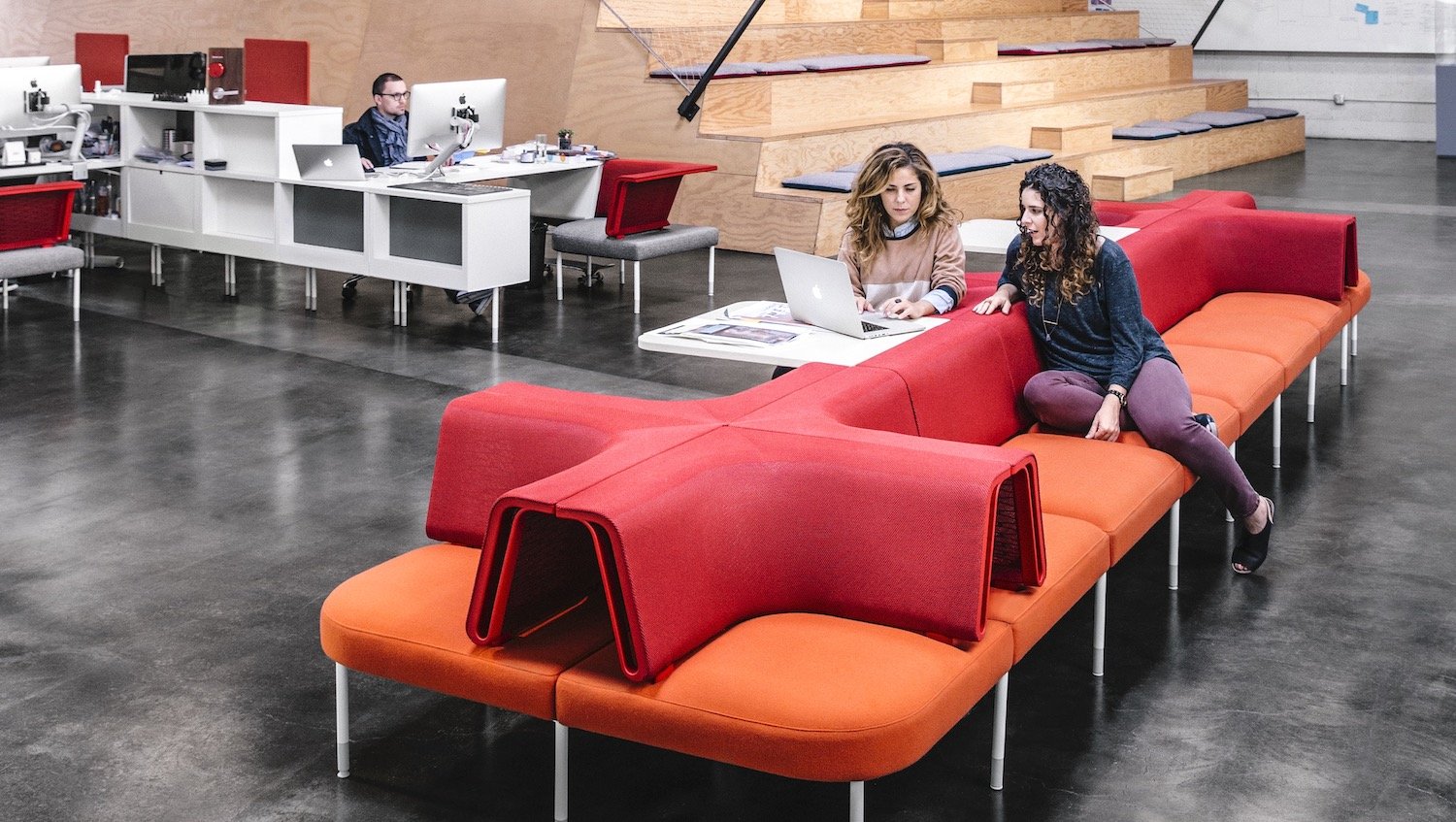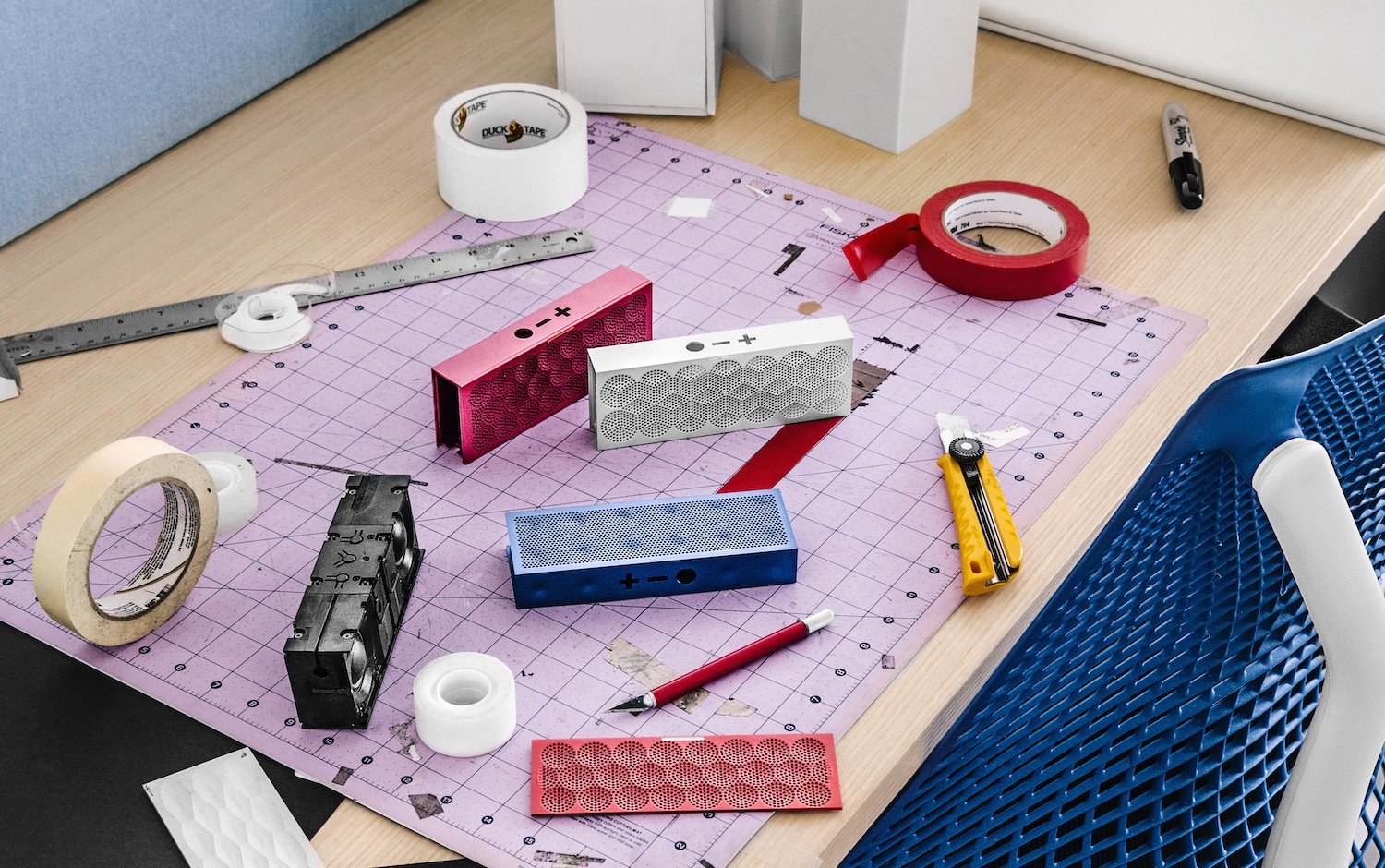hen we enter the offices of Fuseproject in San Francisco’s Design District, it becomes clear that the company’s work goes well beyond design in the strictest sense. The employees work in a giant open space on projects that might extend to the complete rebranding and strategic redefinition of a client’s business. The list of customers of the company, founded in 1999 by Swiss-born star designer Yves Behar, is long, ranging from Nike to L’Oreal, Louis Vuitton to Prada, Samsung to Herman Miller.
Fuseproject’s work goes well beyond design in the strictest sense, sometimes extending to the complete rebranding and strategic redefinition of a client’s business.
The man himself is a blend of casual outdoor lover and busy design conceptualiser, with an Owen Wilson-esque look. He has worked for a long list of European fashion houses, and knows better than anyone that the relationship with tech guys is not always a smooth road. These are two different worlds.
The paradox facing Swiss-born Yves Behar is also that beyond wearables, the only traditional timepieces he has created were for an American and a Japanese brand: the contemporary version of the famed Museum watch for Movado, and a highly innovative and whimsical display for an Issey Miyake watch. We met him.
-

- Yves Behar
You work in Silicon Valley but your roots are in Switzerland. What’s your take on the impact of the former, which has recently started producing watches, on the latter, whose core business for centuries has been the craft of watchmaking?
I don’t think the development of watches in Silicon Valley negates the vitality of the Swiss watch at all. The mechanical timepiece can be seen as the ultimate accessory for people – overwhelmingly males – who already have everything. However, I fear there might be a lack of innovation in the Swiss watch industry if it limits itself to this vision. It is somewhat too self-referencing and self-centred.
“The mechanical timepiece can be seen as the ultimate accessory for people – overwhelmingly males – who already have everything.”
What avenues of innovation have you identified for the traditional watch, given that its primary selling point is precisely ‘tradition’?
There is still plenty to do in terms of customisation, distribution and new ways of engaging with people. The phase of digital disruption that is changing the face of the watch world is the opportunity of a lifetime, in an industry that has stayed very much the same for the last 40 years. When I grew up in Switzerland, watchmakers were trying new things, like the Swatch. If I compare the 1960s or 1970s with today, there was a sense of risk-taking that is missing now. Today, we admire the disruption of the past...

You have been in charge of redesigning another iconic Swiss product: the Rivella soft drink. What lessons can you draw from that experience?
Rivella wanted to evolve from a traditional brand into something more inclusive, reaching out to a wider audience. It was a very big and bold step for them, and we undertook a comprehensive rebranding. The project was successful in a highly competitive industry. I think that’s exactly where many watch brands are today: trying to develop a more inclusive business. I would love to spend more time with these brands.
“If I compare the 1960s or 1970s with today, there was a sense of risk-taking that is missing now. Today, we admire the disruption of the past...”
Why are you interested in watches?
I think the wrist is the ideal place for a functional object. I love to observe how people connect with their objects. And it’s one of the most exciting industries because it knows how to make things and how to make them work for a long time, how to create inner and outer beauty. Very few traditional industries have managed to continue doing that. But I’m always asking the question: what are the next possibilities? We need to find new ways to wear a watch, beyond the clichés of “toys for boys” or “male jewellery”.

Actually, it seems that the work of watch designers is enjoying newfound status lately: just look at the buzz around Gerald Genta’s huge legacy. Are designers acquiring a bigger say in industrial decision-making processes?
Designers can create bridges between different worlds. This is how I see my role. The watch itself can be re-imagined as an object. But we also need to tackle new approaches when it comes to how a timepiece is introduced and bought by customers. What’s really good here at fuseproject is the way we design the product, the experience and retail as an ecosystem. You have to bring all the pieces together. The new generation of consumers has been raised with Apple and Nike, brands that are really consistent in the way they present themselves. As a designer, I work with technology but also with craft.
“Designers can create bridges between different worlds. This is how I see my role. The watch itself can be re-imagined as an object.”
How do you explain the lack of dialogue between Silicon Valley and Switzerland?
In many ways, what prevents the Swiss watch industry from connecting with Silicon Valley is the challenge of access to technologies, as this ecosystem is very costly. The European fashion industry is somewhat afraid of tech, and that’s true for the watch industry too. The problem is that the user experience, the package experience and the retail experience are too disconnected. And on the other hand, Silicon Valley doesn’t see craftsmanship as the huge opportunity that it is; there is a lack of imagination in this sense. Tech companies are not in charge of manufacturing, while in the watch industry, you are very close to the product.

5 WATCHES AS SEEN BY YVES BEHAR

Issey Miyake Vue by Yves Behar
“A metaphor of our time, as one can see the past and the future unfolding as the hour numbers appear and disappear under the thick-lid glass. A kinetic circular pattern creates a magical experience that presents only the numbers relevant to telling the time.”

Movado Edge by Yves Behar
“An exploration of minimalism and simplicity. I had the honour to be the first industrial designer with whom Movado had collaborated since the classic mid-century Museum Dial. The face is made of anodised aluminium with a 3-dimensional ridge and sun pattern that animates the face beautifully.”

Patek Philippe Calatrava 5227G-001 Ivory Dial Leather Men’s 39mm Watch
“Classic refined beauty. Sometimes a great product is the essence of detail and refinement, which this Patek Philippe exudes.”

Patek Philippe asymmetrical wristwatch by Gilbert Albert
“This Patek Philippe, ref. 3412, is a great example of asymmetric ’70s design. I am always interested in geometric explorations that challenge symmetry.”

Original 1983 Swatch
“Swatch revolutionised the Swiss watch in 1983 when I was a 16-year-old Swiss teen. I still remember the exciting launch, and how the plastic watch started a revolution of accessible industrial design.”

















































